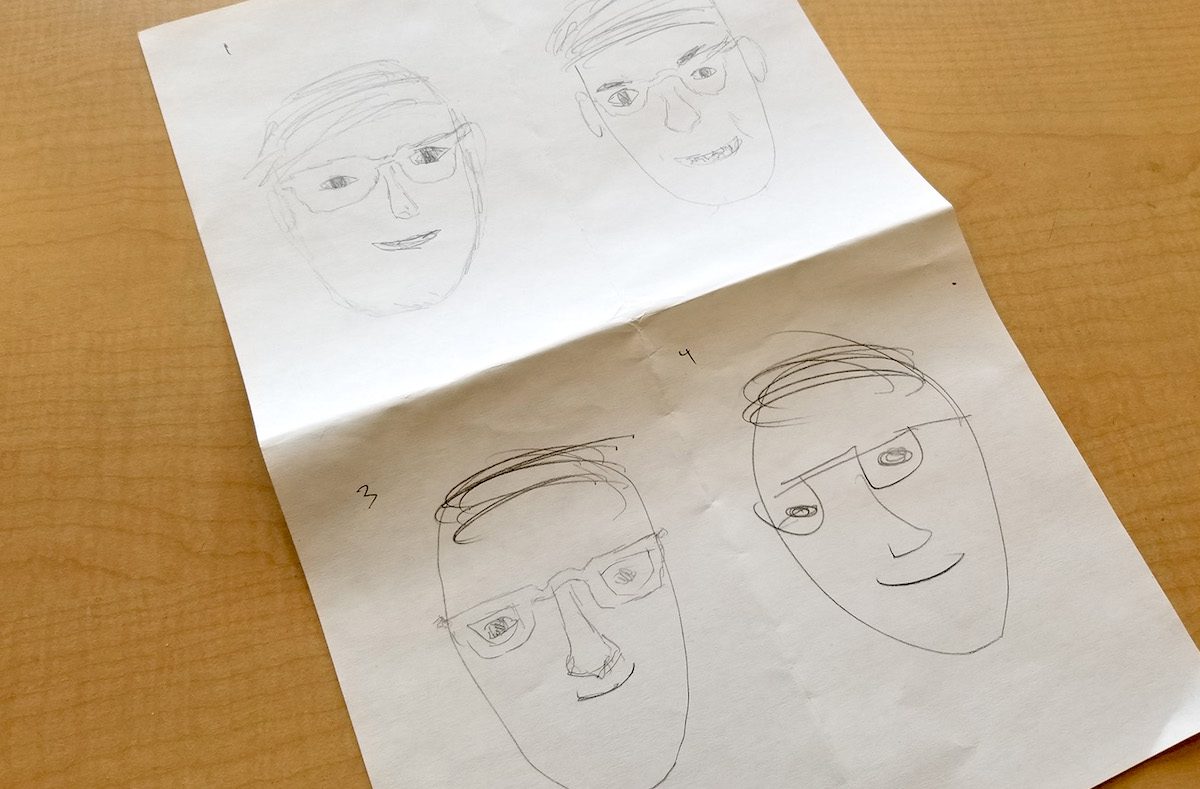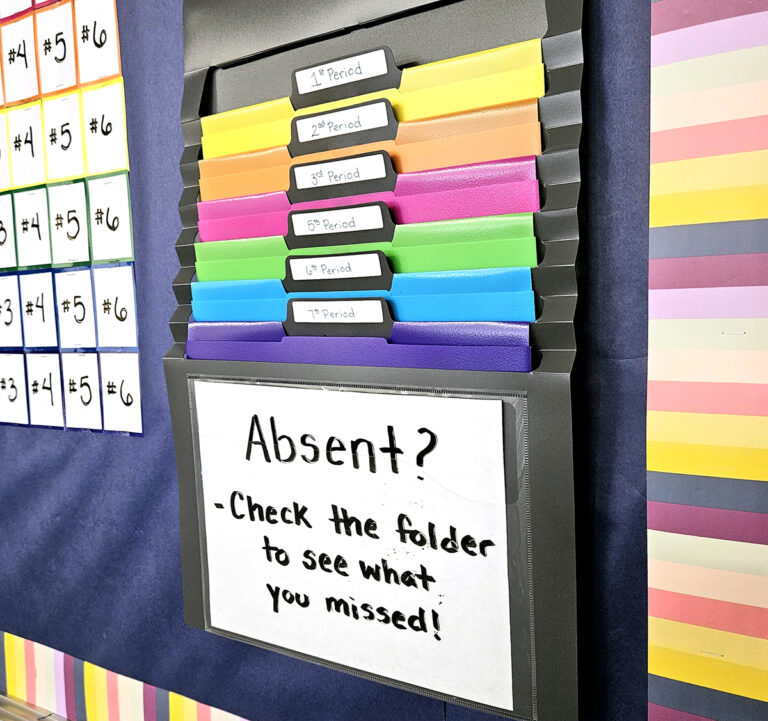Getting class started with middle school students can be a challenge. It’s easy to lose the first few minutes of class to tasks like attendance or settling students down. Having an engaging entry task for the class can be a game changer. It energizes students and gets them in the creative flow.
In the same way, getting middle school students invested in a new project can also be tricky. It pays to start with an activity to capture their interest and attention.
Here are 5 of my favorite introductory activities for middle school students!
1. Timed Drawings
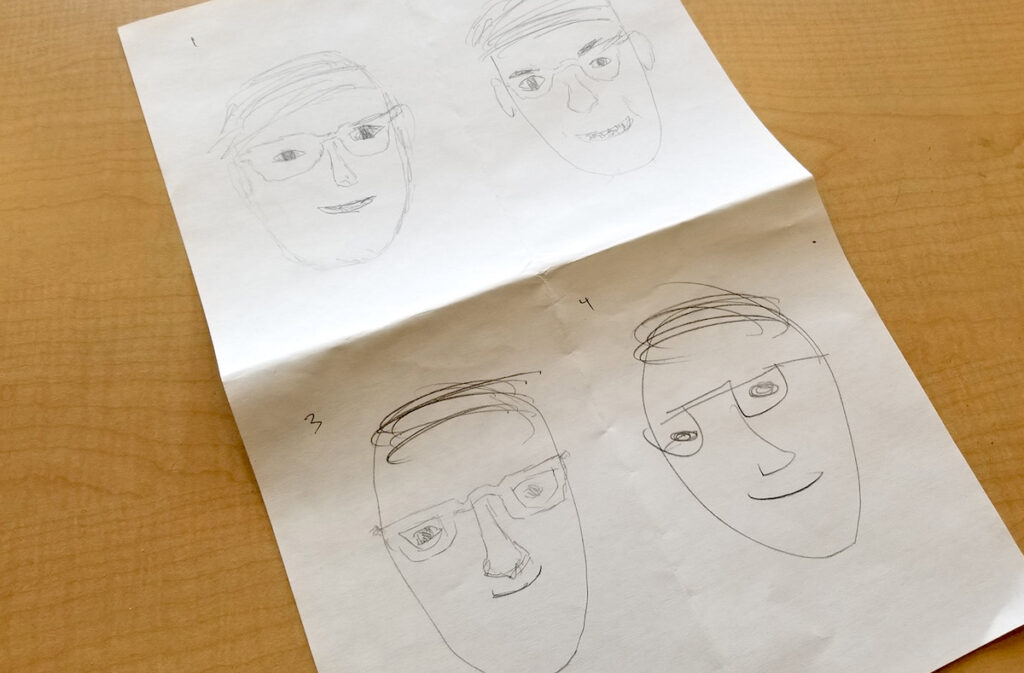
Procedure
- Have each student take a piece of paper and fold it into four quadrants. Students should be sitting across from each other and able to see the other person’s face and torso.
- Inform them they will be doing portraits and you are timing them. Wait for the usual groans and shrieks about their appearance to subside, and then start your timer.
- For the first drawing, give students two minutes. From there, give progressively shorter times: one minute, thirty seconds, ten seconds.
- Once all drawings are done, encourage them to take a look at each portrait and notice how their drawings changed as things sped up.
Rationale
This exercise pushes students to move quickly. This can be especially helpful for students who are resistant to working at a faster pace. Setting the exercise up to have them work progressively faster helps strip away the second-guessing and methodical approaches that can bog down perfectionists. It’s also an excellent way for students to work on the essentials of what makes a portrait.
Here are three questions students might consider when they are finished.
- What features did I choose to draw first?
- What things got left out as I had less time?
- What is most recognizable about the person I was drawing? Did I capture it?
2. Wacky Word Pairings
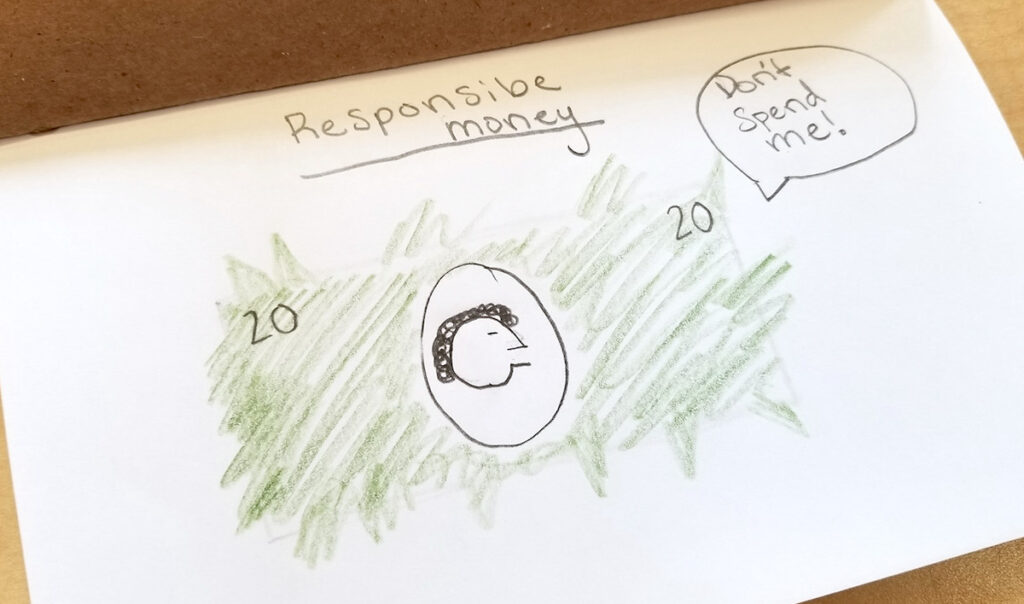
Procedure
- Assign each student an unusual or unexpected adjective-noun pairing. For example, “squishy bicycle,” or, “irritated kitten.”
- Give students a set amount of time to illustrate their pairing. Do not let them look up what the words mean. Instead, have them draw whatever it is they think visually describes their phrase.
- Have a quick gallery walk afterward to share the fun.
I use the website, Creative Combinations, to find fun and weird pairings of words for students to draw. However, you can also make up your own cards and have students pick out random combinations. In this case, you could add a verb to the fun.
Rationale
By creating odd combinations, you can push students to stretch their imaginations. The sillier the phrase, the better! By not allowing students to look words up, they end up trying to deduce the definitions based on the word parts. Unintentional vocabulary practice at it’s finest! Overall, this activity is a great way to get students thinking visually.
3. Exquisite Corpse
Procedure
- Give students a piece of paper and tell them to fold it into thirds.
- Tell them they will be drawing a figure.
- Give students a set amount of time to draw the head on the first section.
- When finished, have students fold the first section over so that only a tiny part of the drawing is exposed and pass their drawing to someone else. Folding the paper in this way ensures the next student will know where to start.
- Have the next student draw the torso before folding that over and then passing it along to the last student to draw the bottom of the figure.
- Once complete, unfold the drawing and do a gallery walk to see each of the final figures.
Rationale
Exquisite corpse drawings encourage risk-taking, experimentation, and collaboration. Masked behind the fun and goofiness is an engaging creative exercise. These drawings remove control and encourage students to become comfortable with unexpected outcomes and working collaboratively. Inevitably, students want to return to this warm-up to try and top their last attempt.
4. Chalk Drawing
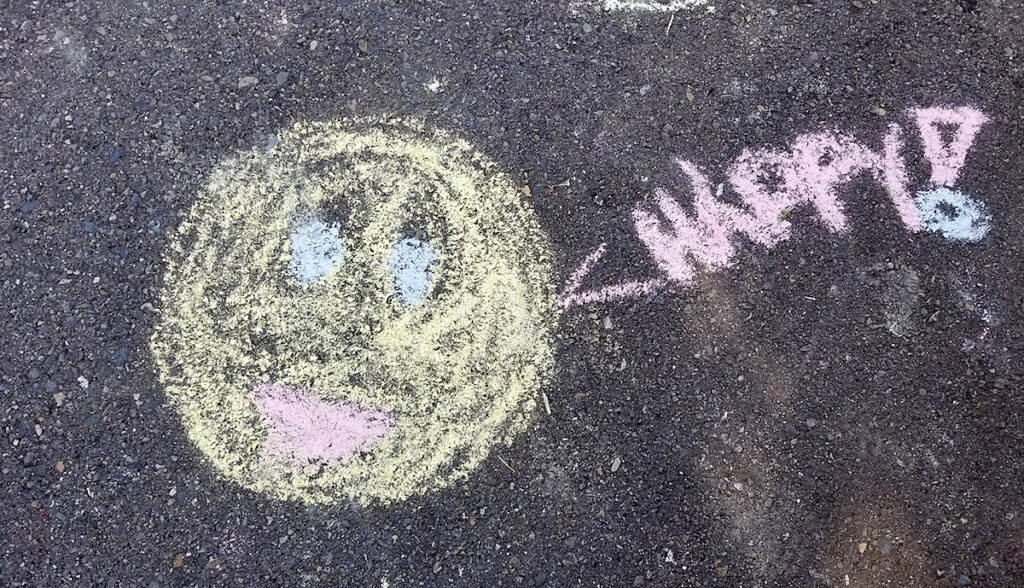
Procedure
- Head outside to a flat, paved area.
- Give students some chalk, a prompt, and a time limit.
- Set them loose and encourage them to work big!
Here are four prompts you may want to try:
- Aliens are landing at the school!
- Today’s lunch is…
- My favorite hobby/activity is…
- The new school mascot is…
Rationale
Working with chalk is quick, easy, and temporary. It’s an inherently rough medium that doesn’t allow for perfectionism. It also challenges students to work on a large scale and experience drawing from the shoulder and elbow rather than their wrists and fingers. The temporary nature of the drawings also appeals to middle school students. They know their work will wash away with the next rain shower, and they’re more willing to stretch and play with their drawings.
5. Word Balloons
Procedure
- Give students a piece of paper to cut into the shape of a word bubble.
- Have them write a phrase or series of symbols that respond to a topic or prompt of the day.
- Have students pose with their word bubbles as if they are uttering the phrase and take photos.
- Save each digital file.
- At the end of the course, you can compile the photos as a collection or journal of the class!
Rationale
A consistent activity like this one helps develop routines and is a great way to get students thinking creatively at the beginning of class. I use this activity in my photography class. It pushes students to continually change things up and not get too repetitive in their work. They get more creative with each passing class. Plus, the phrases become an impromptu journal of their time in class.
Whether you’re looking for a short bellringer or an introductory activity, you’re sure to find something on this list your middle schoolers will enjoy.
How do you start your classes off each day?
Do you also have closing activities you like to do with your students?
Magazine articles and podcasts are opinions of professional education contributors and do not necessarily represent the position of the Art of Education University (AOEU) or its academic offerings. Contributors use terms in the way they are most often talked about in the scope of their educational experiences.
